You are here
Aisha-Bibi mausoleum.
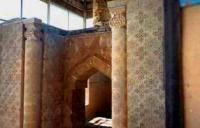
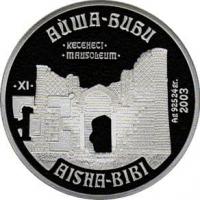
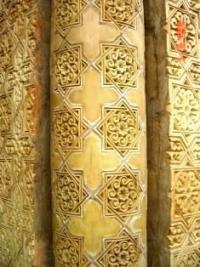
Tours on ancient mausoleums of Southern Kazakhstan.
“A long time ago there was a city here, and a manap lived here, and his beautiful daughter was born, so he asked the learned people what would happen to her? They said that she would die from karakurt. Well, the manap ordered to build a high tower at the top, and his daughter lived there.
It just didn't help. He who has already died will die; The tower didn’t help either, they brought her fruit once, but they didn’t pay attention, and there was a karakurt there, bit her, and she died.”
M.S. Znamensky. “Diary of the Aulie-Ata campaign. 1864"
Photo tours on historical monuments of Kazakhstan.
Aisha Bibi mausoleum is located at an altitude of 698 meters above sea level, located in the central part of the village of Aisha Bibi, 350 meters south of the Taraz - Baurzhan Momyshuly highway, 7 kilometers northwest of the village of Choldala, 16.5 kilometers on southwest of the city of Taraz in the Zhambyl district of the region of the same name.
A monument built over the grave of Aisha Bibi in the 10th - 11th centuries. This is a square structure, with sides measuring 7.6 meters along the outer contour. The base of the mausoleum is cubic. Massive columns are located at its four corners.
The patterns of the mausoleum combine traditional types of ornamental art of the ancient tribes of Kazakhstan, including geometric, zoomorphic and solar motifs, rooted in the art of the Andronovo and Saka tribes.
Its walls are made of burnt brick (dimensions 26 x 26 x 4.5 cm), with their internal space filled with fragments of defective slabs, ganch and clay. The covering of the mausoleum has been lost, but the remains of the corner arches of the niche trumpets indicate the domed completion of the volume, carried out through the octahedron tier.
t the base of the walls there are stone blocks. On the outside, the three walls of the mausoleum (except for the back, blank one, which enclosed a mihrab niche in its mass) were designed unambiguously: in the middle of them there are deep vaulted niches, the arches of which rest on three-quarter columns.
At the corners of the building there are columns tapering upward with a diameter of 86 cm at the base. At a height of 3.4 meters they end with a “capital” - under which there are relief epigraphic ribbons with Persian poetic sayings:
- “Autumn... clouds. The earth... is beautiful."
The decor of the facades consists of carved terracotta slabs, different in shape and ornament, due to which the planes of the walls are divided into patterned panels, panels, and borders. In the design of the facade, figured bricks were also used with images of eight-pointed stars, crosses, and quadrangles on their trinities.
This is the only unique monument in Kazakhstan, entirely covered with carved terracotta with rich ornamentation in the form of tiles with 60 varieties of patterns, cornices, non-olive tiles and stylish inscriptions.
The decor of the mausoleum is rich and varied in compositionally combined ornaments in the form of geometric patterns consisting of interlacing polygons, crosses, stars, as well as plant motifs in the form of stems with flowers.
The capitals and columns made of terracotta blocks are covered, like the entire wall, with the finest drawings, representing a rich collection of folk ornamental motifs. The mausoleum can only be compared with such a world masterpiece of ancient architecture as the mausoleum of Ismail Samani in Bukhara.
There is no reliable information left about the construction of the mausoleum. There is no reliable information left about the construction of the mausoleum. A large number of scientific and popular science works are dedicated to the Aisha Bibi Mausoleum.
Research of Aisha Bibi mausoleum.
The building was examined by L.B. Rozina, M.E. Masson, G.A. Pugachenkova, A. Kh. Margulan and others. The first researcher of the mausoleum in 1893 was the Russian archaeologist Vasily Bartold. Also studied in 1897 by V.A. Kallaur, in 1938 - 1939 by an expedition of the Institute of History and Culture of the KazFAN USSR, in 1953 by an expedition of the Academy of Sciences of Kazakhstan. In 1960, a protective glass sarcophagus was built on four sides and a slate roof without a dome, without the eastern and partially northern and southern parts of the walls.
The sarcophagus existed until the beginning of 2003. In 2002, Nishan Rameto was invited to restore the architectural monument and build a park around it. Architect T.K. Basenov called it “a kind of museum in which the main ornamental treasures of Kazakhstan’s architecture are concentrated and which contains the key to understanding traditional forms.
There is a Kazakh legend about Aisha Bibi's love for her groom and 28 different versions of this legend.
“A completely different meaning is given to the Aisha-Bibi mausoleum, erected along the caravan route seven farsakhs south of Akyrtas. This is a monument to love and sorrow. Aisha Bibi was the beloved of Karakhan, who built a mausoleum in memory of her.”
Geographic coordinates of Aisha Bibi mausoleum: N42°50'01 E71°12'37
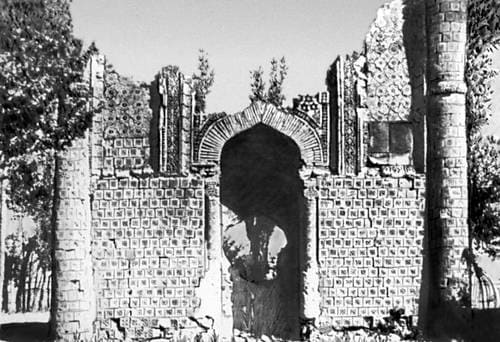
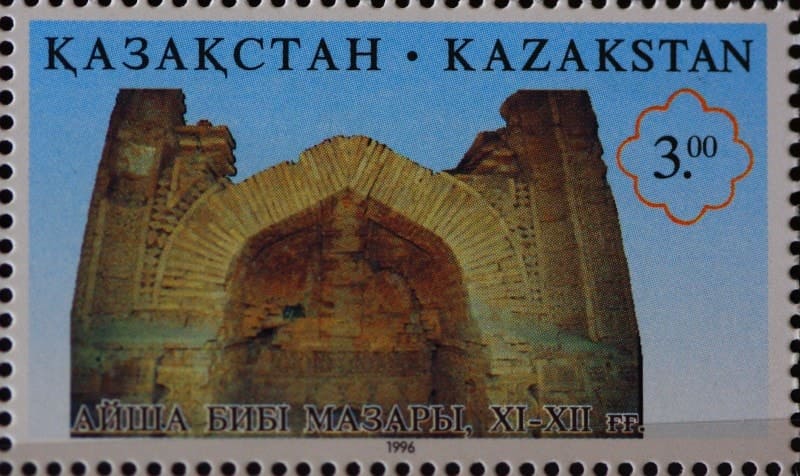
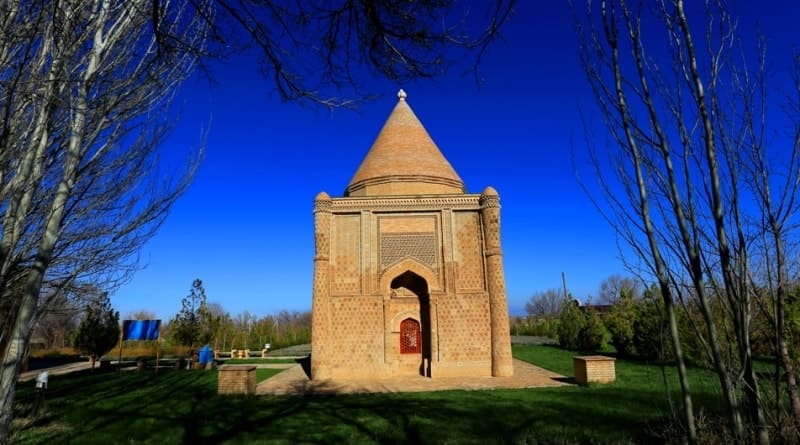

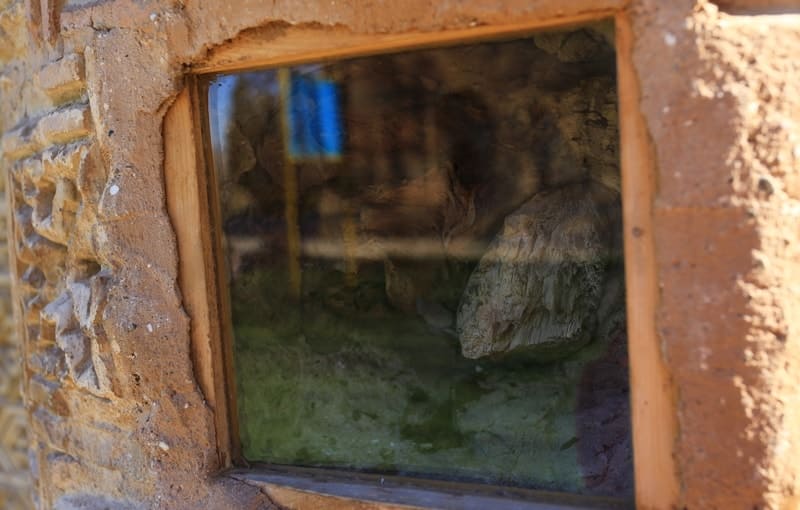
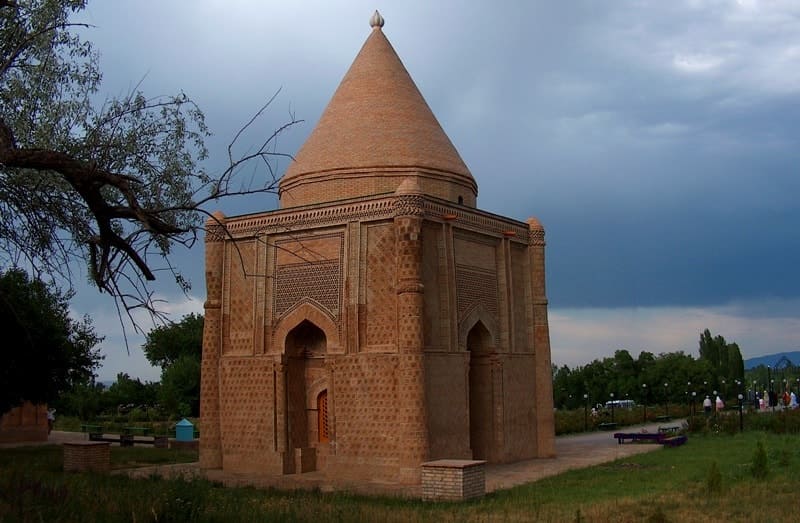

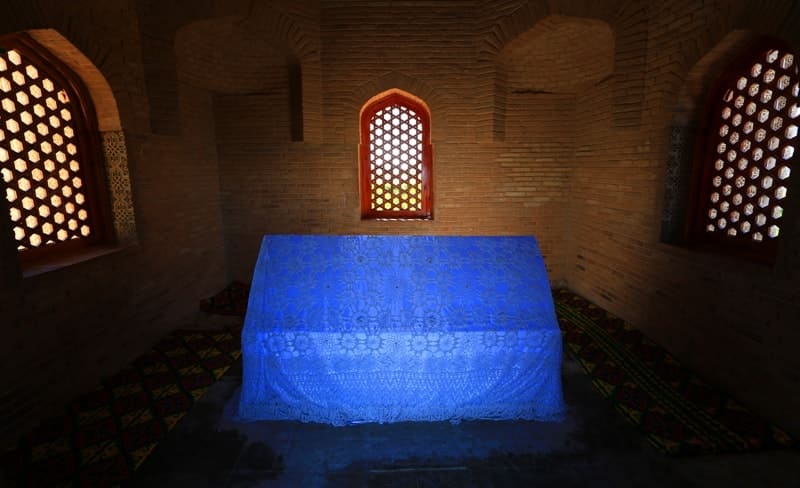
Authority:
"Religious and spiritual monuments of Central Asia." Author M. Khashimov. Publishing house "Saga", 2001. "Kazakhstan is touristic." Publishing house "Kainar", 1989. “Ancient Kazakhstan” Publishing house “Aruna”, 2006. Goryacheva V.D. "Cult and memorial monuments."
Photos by:
Alexander Petrov.







